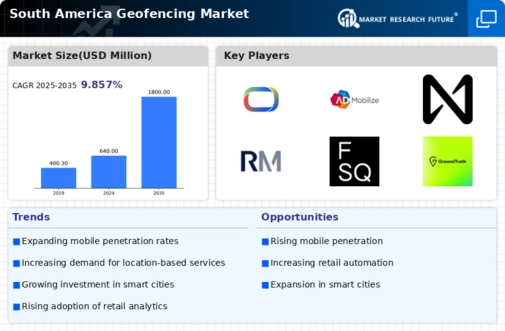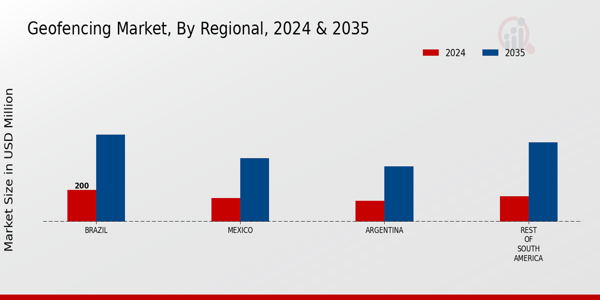The South America Geofencing Market is experiencing significant growth and competitive dynamics as organizations increasingly recognize the value of location-based services in enhancing customer engagement and driving sales. Various players in the market are employing innovative strategies to capture market share, leveraging advanced technologies to improve geofencing capabilities. The competition is primarily driven by the rising demand for personalized marketing solutions, increased smartphone penetration among consumers, and a growing emphasis on real-time analytics.
As the market evolves, companies are focusing on partnerships and technological collaborations to enhance their offerings, streamline operations, and expand their geographical reach to serve a burgeoning clientele across diverse industries.Gimbal has established a notable presence in the South America Geofencing Market, driven by its comprehensive suite of location-based solutions that cater to retail, hospitality, and other sectors. The company excels in delivering robust SDKs and APIs that enable businesses to create highly customized geofencing campaigns, allowing for precision targeting and real-time customer engagement.
Gimbal's advanced location intelligence capabilities empower businesses to analyze foot traffic patterns, optimize marketing strategies, and enhance customer experiences. The company's strengths lie in its innovative technology platform, allowing clients to leverage data-driven insights and seamless integration with existing systems. Gimbal continues to enhance its offerings within the South American market, focusing on building strong partnerships with local businesses to support growth and realize the full potential of geofencing.InMobi holds a pivotal position in the South America Geofencing Market, recognized for its advertising and marketing solutions that integrate geolocation data to drive targeted consumer interactions.
The company offers key products and services, such as mobile advertising, user engagement solutions, and performance analytics, tailored to help brands connect effectively with their audiences.
InMobi's strengths include a vast network of partnerships with publishers and local businesses, enabling extensive reach and effective audience segmentation. The company has also been actively pursuing mergers and acquisitions to enhance its technology capabilities and expand its market presence in South America, allowing it to deliver more sophisticated and localization-focused solutions. With a commitment to innovation and a deep understanding of the local market dynamics, InMobi continues to solidify its position as a competitive player in the geofencing arena, influencing marketing strategies across the region.

















